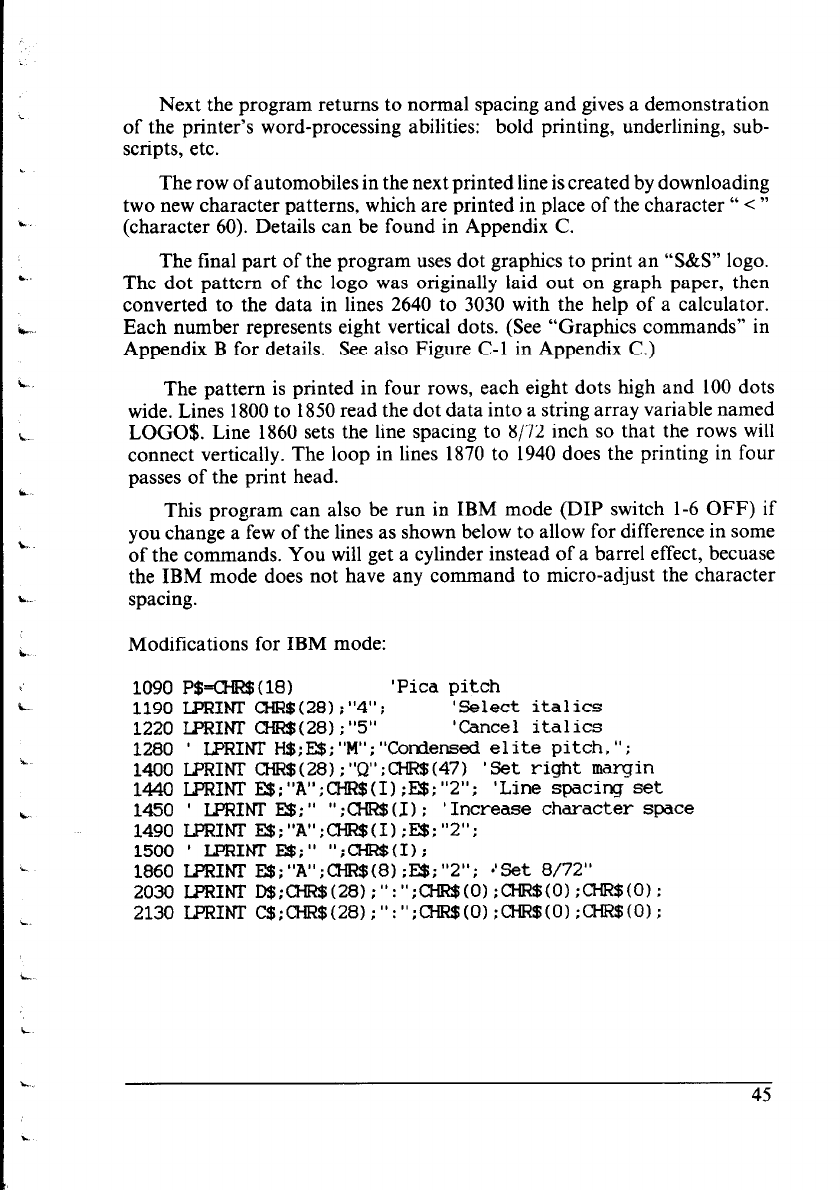
Next the program returns to normal spacing and gives a demonstration
of the printer’s word-processing abilities: bold printing, underlining, sub-
scripts, etc.
L.
L-
Ir..
The row of automobiles in the next printed line is created by downloading
two new character patterns, which are printed in place of the character “ < ”
(character 60). Details can be found in Appendix C.
The final part of the program uses dot graphics to print an “S&S” logo.
The dot pattern of the logo was originally laid out on graph paper, then
converted to the data in lines 2640 to 3030 with the help of a calculator.
Each number represents eight vertical dots. (See “Graphics commands” in
Appendix B for details. See also Figure C-l in Appendix C.)
The pattern is printed in four rows, each eight dots high and 100 dots
wide. Lines 1800 to 1850 read the dot data into a string array variable named
LOGO$. Line 1860 sets the line spacing to 8/72 inch so that the rows will
connect vertically. The loop in lines 1870 to 1940 does the printing in four
passes of the print head.
L.
b..
This program can also be run in IBM mode (DIP switch l-6 OFF) if
you change a few of the lines as shown below to allow for difference in some
of the commands. You will get a cylinder instead of a barrel effect, becuase
the IBM mode does not have any command to micro-adjust the character
spacing.
6..
Modifications for IBM mode:
1090 P$=CHR$ (181
'Pica pitch
1190 LPRINT CHR$(28) ;"4";
'Select italics
1220 IPR1N-f CHR$(28):"5"
'Cancel italics
1280
' LPRINT H$;E$;"M";
"Condensed elite pitch,";
1400 LPRINT CHR$(28);"Q";CHR!$(47) 'Set right margin
1440 LPRINT E$;"A";CIIR$(I);Eg;"2"; 'Line spacing set
1450
' LPRINr E$;" ";CHR$u);
'Increase character space
1490 LPRINT E$;"A";CWZ$(I);E$;"2":
1500 '
IPRINT E$;” “;cHR$(I):
1860 LPRINT E$;"A";~(8);E$;"2"; )Set 8/72"
2030 LPRINT D$;cwz$(28);":";cHR$(O);cHR$(O);cHR$~O~:
i
2130 LPRINT C$;CHR$(28);":";CHR$(O):CHR$(O);CHR$(O);
45


















